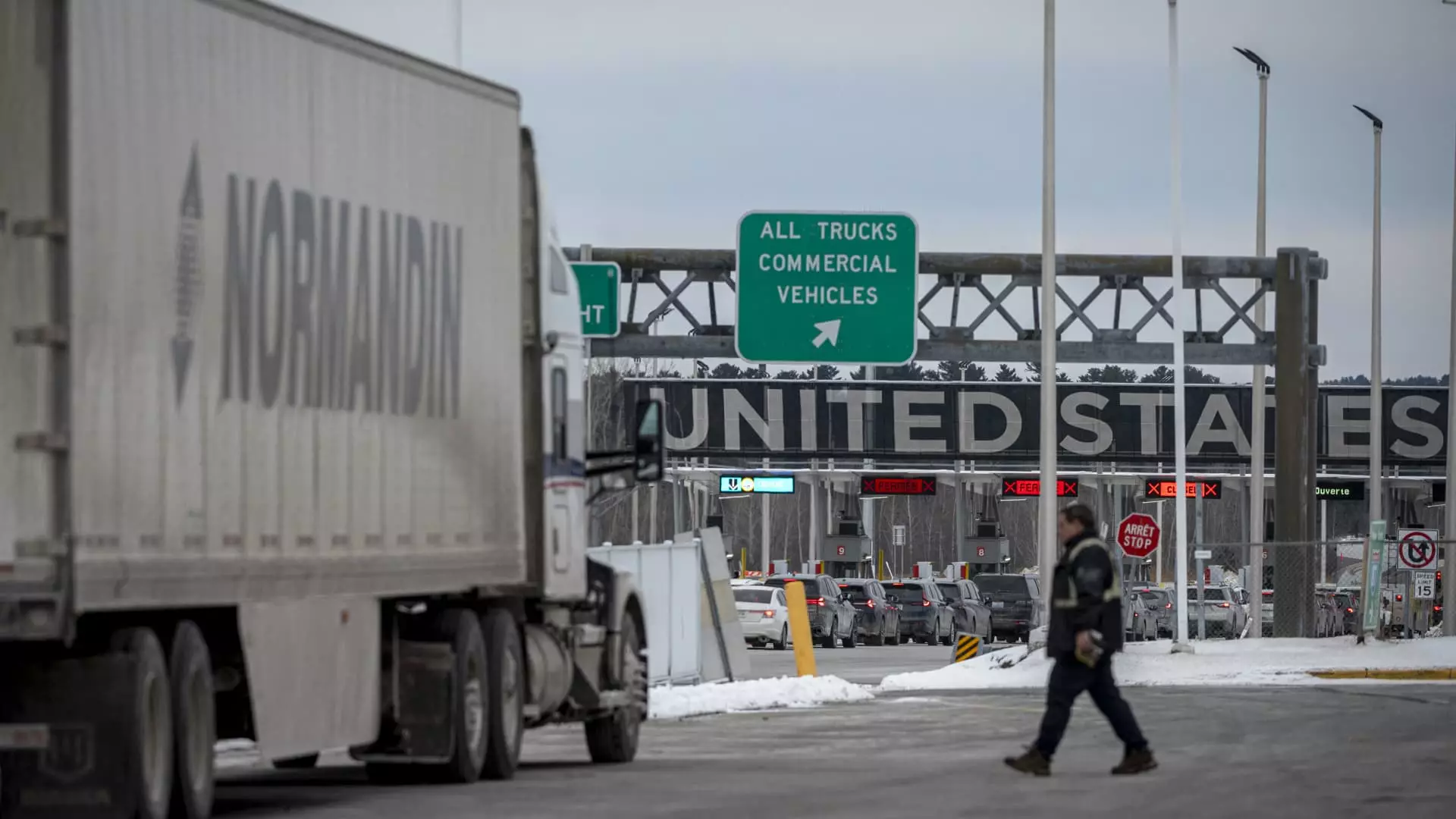The recent imposition of tariffs by the U.S. government is poised to have significant consequences for consumers and the broader economy. With President Donald Trump signing off on tariffs affecting key trade partners—25% on imports from Canada and Mexico, and 10% on those from China—economists are voicing concerns about the long-term implications. The complexity of the situation makes it challenging to forecast exact outcomes; however, the prevailing sentiment suggests that consumers may endure heightened borrowing costs, inhibiting financial relief in the near future.
One of the most immediate impacts of these tariffs is the potential increase in inflation. Experts predict that sustained tariffs will apply upward pressure on consumer prices, particularly as they affect essential goods. The anticipated inflation could range from 0.5% to 1% over the following years if these tariffs remain in place. This figure, derived from economic models assessing core prices—excluding volatile categories such as food and energy—raises alarm for the Federal Reserve (Fed), which aims to maintain inflation around a 2% target.
Economists like Joe Seydl from J.P. Morgan have indicated that the effect of these tariffs could ascend inflation to approximately 2.8% by late 2025. Such projections are alarming not only for consumers who may see their costs rise but also for the Fed, which utilizes interest rate adjustments as one of its primary tools to control inflation and stabilize the job market.
The role of the Federal Reserve in this landscape is critical. As inflation touches elevated levels, the likelihood of further interest rate cuts diminishes. Analysts suggest that the opening for the Fed to lower rates in the near term is effectively closed given the current economic climate. Paul Ashworth, an economist at Capital Economics, argues that the window for any interest rate cuts over the next year and a half is nearly nonexistent. This tension creates a precarious balance for the Fed: maintain economic stimulation while also preventing runaway inflation.
The statistics indicate that elevated inflation levels typically result in sustained or increased borrowing costs for consumers. The benchmark interest rates set by the Fed directly influence credit card rates and other debts, presenting a considerable hurdle for those seeking financial relief.
While the tariff situation appears dire, there are glimmers of short-term negotiation, specifically concerning the tariffs on imports from Mexico. Following diplomacy between President Trump and Mexico’s President Claudia Sheinbaum, there was an announcement of a month-long pause on the 25% tariff to facilitate border control efforts. This development underscores the fluid nature of international trade negotiations: outcomes can pivot rapidly based on political deals and public pressure.
Despite the temporary reprieve on Mexican tariffs, the overarching policies regarding Canada and China remain largely unchanged and are set to go into effect. This continued uncertainty in trade policy keeps economists on high alert regarding potential ramifications for inflation and borrowing rates.
Beyond inflationary pressures, experts caution against overlooking the possible detrimental effects on U.S. economic output. J.P. Morgan projects that these tariffs might subtract as much as 1% from the nation’s GDP by 2026. If economic growth diminishes due to increased costs of goods—which could lead to reduced consumer spending—this could ultimately create an environment where the Fed might consider cutting rates in a bid to support economic activity.
The ripple effects of the new tariffs highlight a complex financial landscape. As inflation is poised to rise, and consumer borrowing costs remain high, it is clear that the implications of these trade decisions will be felt across multiple sectors of the economy. The Fed’s response to these developments will prove crucial in shaping the financial experiences of American consumers in the coming years.

